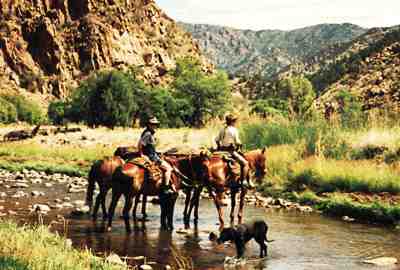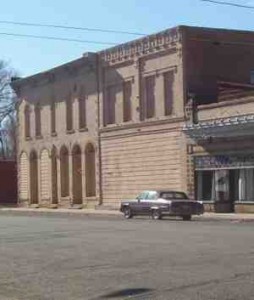Sidebar by Gary Ziegler
Local Lore – January 2007 – Colorado Central Magazine
Carving a deep groove through the ancient metamorphic rock of the Wet Mountains, Custer County’s Grape Creek gathers the runoff from a multitude of mountain streams flowing down from the nearby Sangre de Cristo Range.
Leaving the broad Wet Mountain Valley behind, the waters travel through a rugged, wild landscape forming a series of narrow cliff-sided canyons cut by intersecting drainages. Extending some thirty plus miles from DeWese Reservoir to the Arkansas River just above Canyon City, the canyon passes through mainly public BLM land. Limited and difficult access has kept much of the canyon an isolated haven for wild horses, lost cattle, mountain lion, deer, elk and bear.
This was not always the case. Grape Creek was once the busy route of a Denver & Rio Grande branch line which served the bustling mining and agricultural communities of Rosita, Silvercliff and Westcliffe. Wagons and teams journeyed down from nearby ranches and mines to connect with the railroad at stations along the way and several trains a day chugged back and forth.

But unfortunately for the D&RG, Grape Creek was not a good place to build a railroad. Regular summer flash floods roared down the canyon as they had for millennia past, leaving behind twisted rails and destroyed bridges. Completed in 1881 the line lasted just eight years before finally being abandoned in 1889.
An interesting aspect of a hike in the canyon is that remnants of several old sidings, such as Backburn Station, can be explored. Fallen cabins, occasional rails, and a number of fitted stone bridge abutments are still in place. Abandoned mines, cabins and tunnels along the way indicate an active era now lost and forgotten.
And long before General William Palmer, founder of the D&RG, sent his surveyors up through those narrows, the route was traveled by hunting bands of Utes and their ancient predecessors — because Grape Creek offers the most direct and sheltered natural approach to the high plains and hills of the Wet Mountain Valley, which was once home to large herds of buffalo and elk.
In the bitter cold month of January,1807, before maps, roads, trains or settlements were known to the region, explorer Zebulon Pike and his men happened upon Grape Creek, and followed that ancient route into the high north country of what was then Spanish territory.


